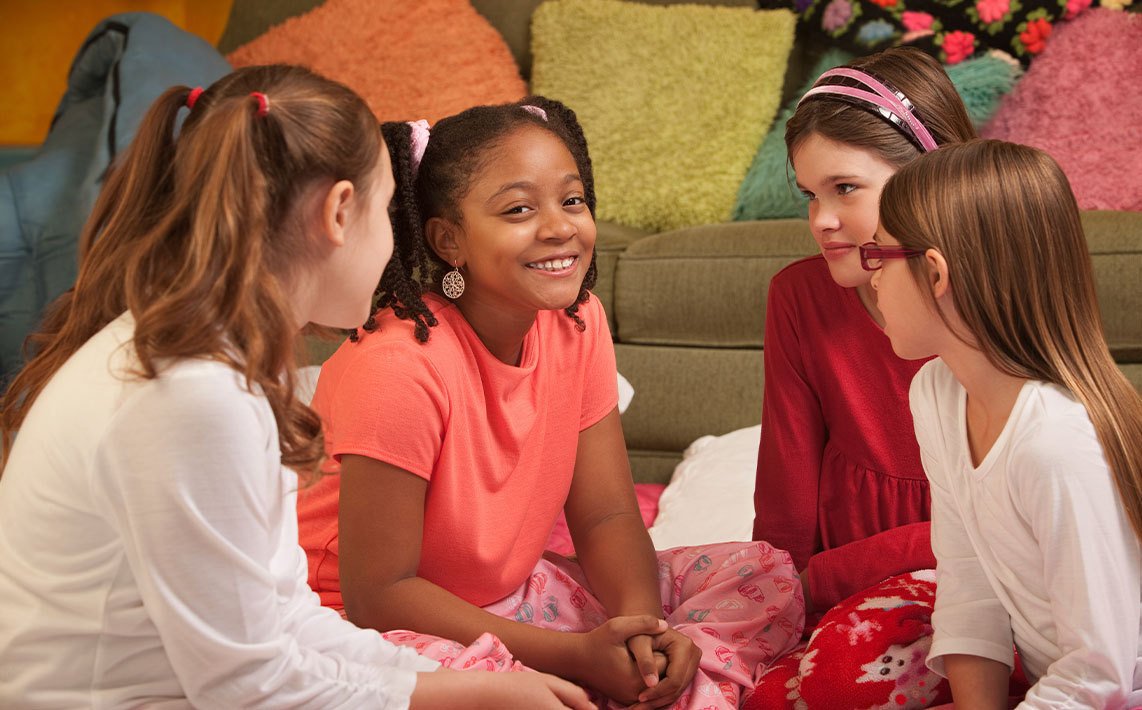Responsible Decision-Making
Family Resources on
Making Healthy Choices
Project and Purpose
Students consider making healthy choices.
Essential Questions
What are some healthy choices we can make to help stay away from drugs and alcohol?

If this lesson was used in the classroom: Students learned about making decisions and how to make healthy choices. Students will have participated in a writing activity (appropriate to their grade level) where they describe how to make healthy decisions avoiding drugs and alcohol. The writing assignment may be a poem, a paragraph, or drawings.
Getting Ready for the Conversation
Making healthy choices is a lifetime challenge, particularly for children and youth when faced with whether or not to use drugs or alcohol. Family discussions about healthy choices that students will need to make will happen from time to time as children grow and mature.
Conversation Starters and Practice at Home Activities
The first item is for follow-up after participating in class activities.
Tell about the writing assignment in class. Why did you choose the topic you wrote about?
What were some of the comments that other students made during the class discussion? Why were the comments you mentioned interesting?
Why do you think that it can be okay for adults to use alcohol, but it is never okay for children?
What are some of the healthy choices we make as a family? How can we make sure that we help you (and other children in the home) keep making these healthy choices?
School to Home Resources on Making Healthy Choices
Materials
- Way to post student ideas (i.e., chart paper and markers, SmartBoard, etc.)
- Writing paper/lined paper
- Construction paper
- Pencils/pens
- Crayons, markers, etc.
- In a remote environment, meeting software will need to have “breakout room” or similar function enabled allowing for small group discussions and handouts will need to be shared with student groups by email or chat function
Procedure
Introduction:
1. Begin a discussion about decisions and choices. Use any/all of the following questions:
- What are some decisions or choices you have recently made? Did you have to make a decision or choice today? Last week? In the past month?
- Who helps you make those decisions?
- When you have to decide something, what are some of the questions you ask yourself?
2. Continue the discussion by explaining that asking yourself questions is a good way to make healthy choices and good decisions. Make a list of questions students might think about when making decisions/choices. Be sure to include:
- Is this harmful or good for me?
- Will I get in trouble if I do this? Why?
- Am I comfortable doing this or am I doing this because someone is “making me”?
- What might happen if I make this choice or decision?
Direct Instruction (I do):
1. Discuss how afterschool activities are usually a very healthy choice and help us to keep busy and stay away from possible bad situations.
2. Share one or two activities you participated in when in school and which ones you continue to do now. Talk about these as healthy choices and how you decided they would be good for you. Talk about how these activities are healthy choices that have helped you stay away from bad situations.
Guided Exploration (We do):
1. Ask students what they do to keep busy after school. Discuss how these hobbies and activities are important and positive pieces of their lives.
2. Ask them how these activities help them stay away from possible bad situations and making bad decisions like trying drugs and alcohol. Create a visible list for students to reference in the next section of the lesson.
Independent Practice (You do):
1. Distribute writing paper and explain that they are going to create a class book about the healthy choices they make instead of choosing drugs or alcohol. Use the list generated by the class discussion for ideas.
2. Students may write a paragraph, a poem, or just a few lines. Books have illustrations, so make sure students know there is an opportunity to illustrate their writing.
3. Decide on a page limit for your age group: should each student write and draw on the same page?
Should there be an opportunity for writing on one page and illustrations on another? Do what works for your class.
4. Have students work within the framework of your school’s writing program to complete their work.
5. When everyone has finished the pages, have students share their work with the class.
6. Decide on a title and a cover for the book and determine who will create the cover.
Conclusion
Bind the materials in book fashion (there are many websites that offer advice on how to do this well). Consider sharing with other classes, the administration, and/or the Parent Association

